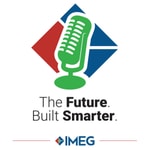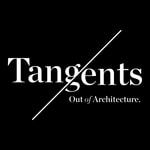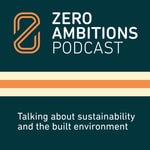The Future. Built Smarter. – Détails, épisodes et analyse
Détails du podcast
Informations techniques et générales issues du flux RSS du podcast.

The Future. Built Smarter.
IMEG Corp.
Fréquence : 1 épisode/20j. Total Éps: 60

Classements récents
Dernières positions dans les classements Apple Podcasts et Spotify.
Apple Podcasts
🇨🇦 Canada - businessNews
09/09/2024#94🇨🇦 Canada - businessNews
08/09/2024#80🇨🇦 Canada - businessNews
07/09/2024#67🇨🇦 Canada - businessNews
06/09/2024#57🇨🇦 Canada - businessNews
05/09/2024#41
Spotify
Aucun classement récent disponible
Liens partagés entre épisodes et podcasts
Liens présents dans les descriptions d'épisodes et autres podcasts les utilisant également.
See allQualité et score du flux RSS
Évaluation technique de la qualité et de la structure du flux RSS.
See allScore global : 52%
Historique des publications
Répartition mensuelle des publications d'épisodes au fil des années.
Antarctica or bust: Site visit sends IMEG to penguin paradise
Épisode 60
lundi 20 mai 2024 • Durée 19:06
IMEG’s Peter Monroe joins this episode of The Future Built Smarter to share the experiences of his recent site visit to Antarctica. A former client executive and a structural engineer for 55 years, Peter made the journey from Denver to Antarctica in early 2024 to visit a project at McMurdo Station, a National Science Foundation research facility on Ross Island. McMurdo is undergoing extensive updates, and Peter’s visit was to observe the structural construction of the station’s new dormitory, one of two buildings for which IMEG has provided structural construction documents.
Established in 1955, McMurdo consists of numerous buildings and infrastructure of varying sizes and functions, many that are no longer used, others that will be replaced and consolidated into more efficient modern facilities. “I've been telling people the best way to describe it is like some of the old mining towns here in Colorado or out in California that are half abandoned,” Peter says of his first impressions of McMurdo. He also discusses the added challenges of design and construction in the Antarctic—extreme weather and permafrost, materials logistics, limited construction seasons—and key takeaways from the dormitory project. “Generally, we made good decisions,” he says, adding that there were many lessons learned to apply to the core building—the next project IMEG will design for the NSF. “The dormitory is one of their first major projects and hopefully the lessons transfer.”
While he was scheduled to be at McMurdo for six days, bad weather and airplane mechanical issues extended his stay to 12 days. That allowed him to be present for the dormitory “topping off” ceremony—the hoisting and placement of the final structural steel beam, which he signed along with the other project team partners who were present. The additional days also gave him extra time to explore and take photos and videos of the Antarctic’s native residents. “One of the days, there were two little Adelie penguins walking down the road and we were all standing there watching them. Another day the big emperor penguins came in and there was probably 50, 60, or 70 of them.”
The Antarctica trip will always stand out among Peter’s career highlights and is decidedly his farthest site visit ever—eclipsing a past visit to Saudi Arabia and easily outdistancing anything else. “For something that was in Denver, I'd leave the office in the morning, go out, and be back before lunch.”
Part 4 | IMEG Sustainability Champion Olivia Paxson: ‘One person can only do so much’
Épisode 59
mercredi 17 avril 2024 • Durée 09:54
The final episode in a series about IMEG’s refreshed Sustainability Plan features Olivia Paxson, a structural engineering designer with the firm. Olivia is also the Sustainability Plan’s champion in IMEG’s St. Louis office, where she collaborates with her co-workers to implement the plan’s mandated and optional initiatives.
“We’ve already switched to LED lighting and that's thanks to the people we rent from,” she says. “We have a dishwasher, and we have reusable utensils, and we’re really close to a metro line as well as bus stations.” Like most IMEG offices, the St. Louis team is a tenant in its building and will be working to find more ways to collaborate with the other tenants and the owner to enact further changes.
Olivia is excited over the effort she has seen across IMEG and the potential for meaningful change. “I think this collective action is so important because one individual can only do so much,” she says. “All the offices have come together—different people of different backgrounds, and they're not all engineers. We've got such a variety of people and because we're able to come together I think we can be pushed so much further.”
How Ann Arbor seeks to lift up an underserved neighborhood through community geothermal
Épisode 50
vendredi 10 novembre 2023 • Durée 21:49
This episode features Missy Stults, Sustainability and Innovations Director for the City of Ann Arbor, MI, one of 11 communities being funded by the U.S. Department of Energy’s Geothermal Technologies Office to design a community geothermal heating and cooling system. Joining the conversation is IMEG Sustainability Director Adam McMillen, who is leading the analysis and design portion of the project.
“In Ann Arbor we have the goal of achieving a just transition to communitywide carbon neutrality by 2030,” said Stults. “One of the things that is really critical is centering equity in our work, and so from the very beginning we said we have to make sure that we're working with neighborhoods that we've traditionally disinvested in.” The city’s Bryant Neighborhood—an underserved, energy-burdened community of 262 households, 75 percent of which are considered low-income, with over 50 percent of residents being minorities and renters—was chosen for the project. “For almost three years we've been working with Community Action Network (CAN) and the residents of Bryant to figure out what would it mean if they became the most sustainable neighborhood in America,” said Stults. “What would it mean if you flipped the script on a neighborhood that we sort of just forgot about and made it be the centerpiece of climate action? And then this project came about.”
The goal of the project is to design (and eventually build) a community-scale geothermal system that covers at least 75% of the heating and cooling load for all 262 households as well as for a local school, a county community mental health service center, and the City of Ann Arbor’s public works facility. The project will directly lower the neighborhood’s greenhouse gas emissions by 40%, significantly improve indoor air quality, eliminate the energy burden for low-income residents, and enhance year-round comfort.
The project team is led by the City of Ann Arbor and consists of 14 entities including CAN and other community organizations, mental health providers, the public school district, utility providers, geothermal design firms, and workforce development and training organizations.
“The answer to the climate crisis isn't brand new neighborhoods everywhere,” said McMillen. “It is: Work with what we have in a smarter way, reuse resources we have, then lift everyone else up with us. And make it replicable so anyone can do it.”
UW Health bringing a proton center powered by the sun to Madison
Épisode 49
jeudi 12 octobre 2023 • Durée 18:42
This episode offers a preview of UW Health’s Eastpark Medical Center in Madison, WI. Expected to be fully open by Fall 2024, the seven-story outpatient facility will offer advanced imaging and lab services, destination services, multidisciplinary adult specialties, and women’s complex care. The center also will feature the state-of-the-art UW Health | Carbone Cancer Center, one of the few in the country to offer proton therapy and, in collaboration with Leo Cancer Care, the first healthcare facility in the U.S. to offer upright proton therapy.
Discussing the new center and proton therapy aspects of the project are Jerry McGuire and Steve Mumm, senior project managers for University of Wisconsin Hospitals and Clinics Planning Design and Construction, and Kevin Langan, an IMEG mechanical engineer working on the project. “Proton therapy is a relatively new cancer treatment,” says McGuire. “It’s an advanced form of radiation therapy using a precise dose of radiation that conforms to the tumor itself—reducing side effects and causing no damage to surrounding healthy tissues.” The new center will offer both a rotating gantry where a patient lies down on a couch with the machine rotating around them, and an upright fixed beam system in which the patient sits up. The upright system is being found to provide improved outcomes— offering greater comfort, reducing patient anxiety, and improved accuracy—and is particularly beneficial for pediatric patients.
The planning, design, and construction not only of the proton therapy spaces but also the infrastructure to support the technology was like no other healthcare project. “There were huge implications well beyond the proton therapy space—for example, the chiller plant gets larger, an additional electrical service was added, and larger generators,” said Langan. “It also required a lot of coordination with the proton therapy vendors to make sure we were providing what they needed.” To withstand the neutron dose rates of the treatment bay and contain the radiation, the proton therapy space also required 7-foot-thick concrete walls below grade. A temporary system to pump glycol through tubing within the poured concrete was required to keep the concrete from overheating and to cure appropriately.
Eastpark Medical Center is also seeking LEED v4.1 certification for healthcare and has several sustainable features, including a 1MW rooftop solar array which provides the approximate energy needed to power the proton center. “We basically will have a carbon-neutral proton center in Madison, Wisconsin,” says Mumm.
Housing director: ‘We’re providing homes where people can thrive’
Épisode 48
jeudi 28 septembre 2023 • Durée 13:19
Scott Campagna, Senior Director of Housing at IMEG, is featured in this episode—one in a series of conversations with the firm’s market leaders. Scott talks about the subsectors of IMEG’s housing work—neighborhoods, multifamily, student housing, and senior living—and the challenges and opportunities facing the market overall. “It's an interesting time,” he says. “There's a huge housing demand in all sectors but in the current environment, with the lending being pulled back, projects in all sectors generally are moving a bit slower.” Scott also discusses office-to-residential conversions, a trending topic in the market. He cautions that such pursuits always be preceded by an infrastructure assessment. “Certainly not every building is the same nor is it best suited necessarily for a housing conversion. You need to look at the systems infrastructure to ensure it will support the housing project. You don't want to be hit with any surprises after the fact or during construction.” On all projects in the market, Scott says the mentality at IMEG is to “Turn housing into homes. We understand we are drawing more than just lines on paper—we are providing a home where people can thrive and flourish within our communities.”
Planning is essential for meeting education market challenges
Épisode 47
mardi 19 septembre 2023 • Durée 12:45
In a continuing series of discussions with IMEG’s market leaders, this episode of The Future Built Smarter features John Holbert, vice president of education. John discusses the challenges facing the market, primarily those for higher education institutions, which face ever-increasing enrollment competition, changes in student demographics, limited resources, aging infrastructure, and difficulties with facility staff retention. Many higher education institutions, as well as K-12 school districts, also face challenges in meeting sustainability and environmental initiatives as well as the need to improve safety and security in their buildings and on their campuses. “Security has become a big topic, and we have started consulting on safety and security plans for campuses and districts,” he says. Such initiatives start with a vulnerability assessment and gap analysis, with planning and design including principles from Crime Prevention through Environmental Design, or CPTED. “We’re also seeing more referendums and funding opportunities for safety and security measures,” he adds. Before embarking on any building project, John emphasizes the importance of master planning to best prepare for the needs of the future. Such planning helps institutions meet their long-term goals and allocate funds and other resources accordingly—before it’s too late. “Across the landscape of education, we see a lot of deferred maintenance,” he says. “We're still going into 50-plus-year-old buildings that have original systems in them.”
Keeping K-12 students safe demands a holistic security approach
Épisode 46
mercredi 6 septembre 2023 • Durée 17:28
Holistic security considerations for K-12 school design are examined in this 17-minute episode featuring Ryan Searles, IMEG’s security consulting group leader. Ryan spends an average of three weeks of each month traveling the country presenting at conferences or training organizations in crisis management, active shooter mitigation, and other security preparedness—with a growing number of school districts seeking his team’s services. “We keep seeing a rise in violence in the United States and more violent events occurring at places of education,” he says. “In K-12, particularly, it's really about what we can do to mitigate it from happening.” In addition to getting involved earlier in the design phase of new facilities, Ryan and his team are also conducting an increasing number of security assessments of existing schools, providing answers to such questions as, “What do we have in place? What are we doing right? Where are our gaps and where are our vulnerabilities? How do we fix those?” The most effective security design and emergency preparedness takes a blended, holistic approach, Ryan says, and includes not only physical and technology design aspects but also “the human aspect”—training, drills and rehearsals for staff and students, as well as proactive threat assessments of individuals and being vigilant about watching for early warning signs. “We've been a very reactive culture in the United States with school security and safety. We can't do that anymore—that's become very apparent and has a lot to do with my team being so busy. Schools are reaching out saying, ‘Come show us what we need to do to keep these kids safe.’ “
Ryan Searles will present "Security Considerations for School Design" at 8:15 a.m. Oct. 13 at the Association for Learning Environments' National Conference, LearningSCAPES 2023, in Chicago. Learn more.
Water, water everywhere—with many improvements needed
Épisode 45
mercredi 9 août 2023 • Durée 15:01
This episode—another in a series of discussions with IMEG’s market leaders—features Jack Kusek, market leader for water and wastewater. Listen to the episode and you’ll learn:
- What PFAs are and what can be done about them
- Which U.S. city has the largest concentration of lead pipes
- Why security is a big concern for water and wastewater facilities, particularly in smaller communities
- How two communities collaborated to ensure their water resiliency
- Why outsourcing facility operations is a necessity for many small municipalities
- How IMEG has helped restore Frenchman’s Reef resort on St. Thomas in the U.S. Virgin Islands following back-to-back hurricanes that devastated the property in 2017
Jack also discusses his motivation for the work he specializes in, and the reward he receives when he’s able to help a community improve its water infrastructure and water quality and provide for one of the fundamental needs of life.
“The fact that we can help people on St. Thomas and other communities so that they have new facilities, cleaner water to drink, and wastewater plants that aren't polluting the Top of Formstreams—just seeing how those improvements benefit people and how thankful they are, that’s motivation enough for me.”
Industrial market challenges: Project pace, scramble for resources, ESG goals
Épisode 44
mardi 1 août 2023 • Durée 13:45
This episode—part of a series of conversations with IMEG’s market leaders—features Kelly Altes, the firm’s industrial market leader. Kelly discusses the firm’s industrial teams’ areas of expertise— agriculture, aerospace, automotive, food and beverage, chemical, pharmaceutical, and general manufacturing—as well as challenges facing industrial clients. These include the pace of project delivery, the lengthy process of capital expenditure decisions, and the push to bring manufacturing back to the U.S. She also talks about the difficulty of meeting and funding ESG and corporate sustainability goals and the importance of master planning to help clients achieve those goals over manageable periods time. “I'm actively talking with clients about the importance of master planning,” she says. “As with any big problem, you break it down into small chunks. So, we've worked with a number of clients on yearly capital expenditures that we can look at over a five-, 10-, 15-, or 20-year period to try to help them with that decarbonization process.”
Used as a ‘copilot,’ AI can positively assist designers
Épisode 43
mardi 18 juillet 2023 • Durée 17:57
Note: In keeping with the topic of this episode—artificial intelligence—the following summary has been generated by ChatGPT using a transcription from the podcast.
In this podcast episode, host Joe Payne and co-host Mike Lawless discuss the topic of AI and its impact on the design profession. Their guest, Michael Kilkelly, is a registered architect and member of IMEG’s internal Technical Operations team. He shares insights on how AI is being used in the field of architecture and engineering.
They discuss the initial fears and concerns architects and engineers may have about AI taking over their jobs. However, as people start using AI tools like ChatGPT, they realize the practical applications and usefulness of these technologies. Michael highlights that while there may be some unfounded fears, there is also a recognition of the skill involved in effectively utilizing AI.
The conversation dives into various areas where AI can enhance the design process. Michael mentions generative design tools like TestFit and ARK that help architects create optimal building layouts based on specific parameters. They also discuss the potential of AI in aiding visualization during client meetings, where AI tools can generate images based on spoken text, allowing clients to better understand and react to design concepts.
The hosts explore the benefits of AI in terms of efficiency and productivity, as well as the potential for AI to assist with data analysis and historical data access. They emphasize the concept of "augmented intelligence" and the idea that AI tools can enhance human capabilities rather than replace them entirely. Michael introduces the concept of "prompt engineering" as the art of extracting useful information from AI systems, while maintaining contextual control to avoid generating false or fabricated data.
Looking toward the future, the discussion touches on the possibility of personalized AI assistants or virtual copilots that can work alongside professionals, providing support and leveraging collective experience. They also anticipate advancements in querying databases with AI, allowing users to ask complex questions and receive accurate answers, leading to more informed decision-making.
For related information, read Michael Kilkelly’s article, “AI and architecture and engineering: Programmed for success,” published by Smart Buildings Technology.






